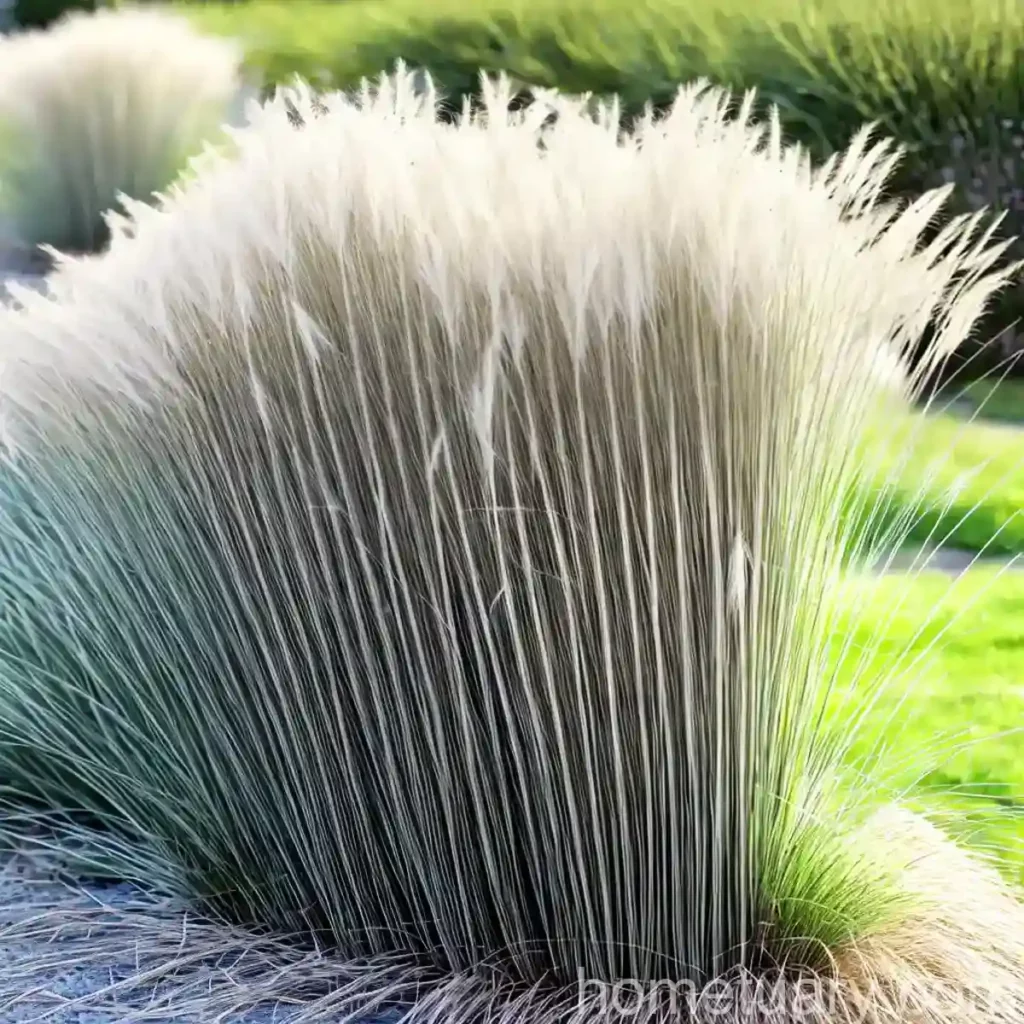Tufted Hair Grass (Deschampsia cespitosa ‘Tardiflora’): A Comprehensive Guide
Introduction
Ornamental grasses play a significant role in landscaping, providing texture, movement, and visual interest to gardens and landscapes. Among these, the tufted hair grass, scientifically known as Deschampsia cespitosa ‘Tardiflora’, stands out as a versatile and attractive option for gardeners. In this guide, we will delve into the various aspects of this ornamental grass, from its characteristics and care requirements to its uses and benefits.
What is Tufted Hair Grass (Deschampsia cespitosa ‘Tardiflora’)?
Tufted hair grass, or Deschampsia cespitosa, is a clump-forming, perennial, cool-season grass native to Europe, Asia, and North America. It is known for its fine texture, graceful appearance, and delicate, airy panicles that sway in the breeze. The ‘Tardiflora’ variety, in particular, is prized for its late-blooming nature, extending its ornamental value well into the fall and winter months when many other plants have ceased to flower.
Key Takeaways
- Scientific Name: Deschampsia cespitosa ‘Tardiflora’
- Common Name: Tufted Hair Grass
- Plant Type: Ornamental Grass
- Bloom Time: Late summer to fall
- Hardiness Zones: 4 to 9
- Mature Height: 2 to 3 feet
- Exposure: Full sun to part shade
- Water Needs: Moderate
- Soil Type: Well-drained, loamy soil
- Features: Fine-textured foliage, delicate panicles, late-blooming
Culture
Cultivating tufted hair grass can be a rewarding endeavor, given its adaptability and low-maintenance nature. Let’s delve into the cultural requirements necessary for the successful growth of this ornamental grass.
Uses
- Landscaping: Tufted hair grass is often used in landscaping to add texture, movement, and a naturalistic appeal to borders, meadows, and cottage gardens.
- Erosion Control: Its extensive root system makes it effective for stabilizing soil on slopes and erosion-prone areas.
- Wildlife Habitat: The airy seed heads of tufted hair grass provide food and shelter for various small birds and wildlife.
- Cut Flowers: The delicate panicles make attractive additions to floral arrangements, both fresh and dried.
Water
Tufted hair grass generally prefers moderate moisture levels. While it can tolerate periods of drought once established, consistent moisture is essential, particularly during the establishment phase and in hotter climates.
Sunlight
For optimal growth and flowering, tufted hair grass thrives in full sun to part shade. In regions with hot summers, some afternoon shade can be beneficial to prevent scorching of the foliage.
Fertilizer
This grass generally doesn’t require much fertilization. However, a light application of a balanced, slow-release fertilizer in early spring can support its growth and overall health.
Soil
Well-drained, loamy soil is ideal for tufted hair grass. It can tolerate a range of soil pH levels and is generally adaptable to different soil types, as long as excessive moisture is avoided.
Pruning
One of the attractive features of tufted hair grass is its minimal pruning requirements. In late winter or early spring, before new growth emerges, cutting back the previous year’s foliage to a few inches above ground level can help rejuvenate the plant and maintain its neat appearance.
Propagation
Tufted hair grass can be propagated through division in early spring or late summer. Simply dig up the plant and divide the clumps into smaller sections, making sure each division has both roots and foliage. Replant the divisions at the same depth as they were previously growing.
Container Popularity
Due to its fine texture and graceful appearance, tufted hair grass is a popular choice for container gardening. It adds a soft, ethereal touch to mixed containers and can be utilized as a centerpiece or as a complement to other flowering plants and ornamentals.
Common Diseases
This grass is relatively resistant to diseases, especially when provided with appropriate cultural conditions and care. However, it can occasionally be affected by foliar diseases such as rust or leaf spot, particularly in humid or overcrowded conditions.
Disease Diagnosis
If you notice discolored or spotted foliage, it is essential to inspect the plant carefully to identify the specific symptoms and any causal agents. Proper diagnosis can help in implementing the most effective control measures.
Common Pests
While relatively pest-resistant, tufted hair grass may occasionally attract pests such as aphids, particularly when grown in close proximity to susceptible plant species. Regular monitoring and appropriate pest management strategies can help keep infestations in check.
Botanist’s Tips
- Companion Planting: Pair tufted hair grass with other ornamental grasses, such as feather reed grass (Calamagrostis), or with flowering perennials like coneflowers (Echinacea) to create dynamic and visually appealing combinations.
- Winter Interest: Let the dried seed heads of tufted hair grass remain standing throughout the winter, as they can add visual interest and provide food for overwintering birds.
Fun Facts
- The genus name “Deschampsia” honors the French physician and naturalist Louis Auguste Deschamps.
- Tufted hair grass is also known by the common names tussock grass and rough hair grass in some regions.
- In its native habitats, tufted hair grass is a common component of montane and subalpine meadows, where it contributes to the biodiversity and ecological balance of these ecosystems.
Links to External Resources
For further information and resources on tufted hair grass, refer to the following links:
- Royal Horticultural Society – Deschampsia cespitosa ‘Tardiflora’
- Missouri Botanical Garden – Deschampsia cespitosa
- University of Minnesota Extension – Ornamental Grasses
In this comprehensive guide, we’ve explored the various aspects of tufted hair grass, from its cultural requirements and uses to maintenance and propagation. Whether used in borders, meadows, or containers, this ornamental grass adds a touch of elegance and natural beauty to any landscape. With its adaptability, low-maintenance nature, and late-blooming characteristic, tufted hair grass stands out as a versatile and valuable addition to gardens and landscapes.
By incorporating the tips and insights provided in this guide, gardeners and landscaping enthusiasts can successfully grow and enjoy the beauty of tufted hair grass in a variety of settings, contributing to the overall appeal and ecological richness of their outdoor spaces.















